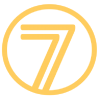HCM CITY — Pepper, sugar and cotton fibre may be listed for trade on the Viet Nam Commodity Exchange (VNX) under a proposal by the Ministry of Industry and Trade (MoIT).
At a seminar held on Tuesday in HCM City, participants agreed that these items would satisfy the diverse needs of commodity traders.
Vu Hong Son, general director of Ocean Group, said the commodity exchange contributed against price speculation as prices were based on transparent supply and demand.
“Trading on the exchange also helps link the domestic market with the international market,” he said.
Currently, MoIT licenses VNX for transactions in coffee, rubber and steel.
Pepper, one of the commodities that should be listed in the future, has one of Viet Nam’s highest export turnover rates.
Although the volume of Vietnamese pepper can influence world prices, the price of Vietnamese pepper is based on pricing information at India’s Kochi Commodity Exchange.
If pepper is traded on a domestic commodity exchange, it will help prevent price-related disadvantages for farmers and risks to businesses.
It would also help ensure the rights of farmers before world prices begin to fluctuate, and it would increase the prestige of Vietnamese pepper with its global partners.
The seminar, held by MoIT’s Domestic Market Department, in collaboration with EU-Viet Nam Multilateral Trade Assistance Project III, was attended by ministry officials, associations, research institutes and HCM City’s Department of Planning and Investment and Department of Industry and Trade.
For the important textile and garment sector, the amount of domestic cotton and raw fibre materials has not met production demand.
Seminar attendees said if these goods were listed on the commodity exchange, industrial development would be promoted.
Son said the listing would help minimise price risks and thus encourage farmers to grow and expand their cotton areas, providing much-needed materials for the textile and garment sector.
In addition, the commodity exchange would limit farmers’ dependence on small-scale purchasing agents, and would ensure long-term benefits for farmers and businesses as well.
For sugar products, the most challenging problem is the difficulty of finding buyers, which discourages sugar investors from increasing capacity.
The commodity exchange would help the sugar sector cut costs for storage and find more raw materials to purchase.
Do Ha Nam, chairman of the Viet Nam Pepper Association, said the country was a leading agricultural exporter but it faced too many problems in developing trade.
He said the commodity exchange for these items was vitally necessary.
“Vietnamese pepper farmers use information at India’s Kochi Commodity Exchange to regulate their prices because there is no domestic commodity exchange for them,” he added.
Commodity trading activities in the country are not that robust because of a lack of large enterprises and diversity in multi-sectors, according to Nguyen Phuong Dung, head of the Domestic Market Department’s VNX operation management office.
She suggested that State management agencies draft a Commodity Exchange Law and establish an agency that would be in charge of managing operations of the VNX.
State management agencies also need to offer training and raise awareness about commodity exchange activities to businesses and investors.
Nguyen Duy Phuong, general director of VNX, said commodity exchanges were a new concept for Viet Nam.
The prices of agricultural commodities are often driven by derivatives on the world market.
Companies expect a domestic intermediary to form an entity to regulate the market, hedge price fluctuations, and stabilise business operations.
VNX, established in 2011 with charter capital of VND150 billion, is an organised commodity exchange for all individuals and institutions.
It acts as bridge to provide information to help businesses quickly access market demands, reduce marketing costs, cut transportation costs, and link the production process with market demand.
A legal framework has not yet been completed for the commodity exchange, a topic that was discussed at the seminar.
Phuong said the ministries of Planning and Investment and Industry and Trade should issue documents to help guide foreign investors’ participation in the commodity exchange in Viet Nam, in an effort to increase the number of investors and transactions. — VNS
 The total volume of exported rice from Vietnam this year is estimated to reach 7.5 million tonnes, according to the Vietnam Food Association (VFA).
The total volume of exported rice from Vietnam this year is estimated to reach 7.5 million tonnes, according to the Vietnam Food Association (VFA).
 Coal exporter Vietnam imported the fuel last month but it was not the first-ever shipment as previously reported by local media, an industry official said Monday.
Coal exporter Vietnam imported the fuel last month but it was not the first-ever shipment as previously reported by local media, an industry official said Monday. Two-way trade between Vietnam and India achieved US$1.85 billion in the first half of this year, according to the Vietnam General Department of Customs.
Two-way trade between Vietnam and India achieved US$1.85 billion in the first half of this year, according to the Vietnam General Department of Customs.